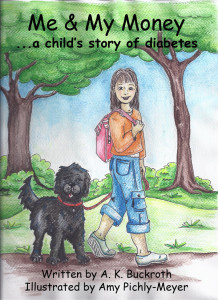|
|
Jan 14, 2019, 8:45 PM (3 days ago) |
The eye doctor looked at my chart, then looked at me. My right eye was bloodshot, red as red can be. Like a vampire’s eyes. She placed the chart on the desk and said: ‘Your chart says that you are 75, is that true?’
‘Of course not’ I was tempted to reply. ‘I only wrote that so I would get preferential treatment. People give up their seat in the waiting room, open doors for you and don’t strike up annoying conversations, thinking that you are gaga anyway.’ Instead, I said: ‘Yes I am 75’.
‘You look great for your age’ the doctor said, as she told me to put my chin on the chinrest and peered into my bloodshot eye through the retinal camera. As I was trying to avoid eye contact with someone whose face is a few inches away, I wondered if she looked good for her age. I had no access to her chart, but if she was 50, she looked terrific; if she was 40, she wasn’t too bad looking, but if she was 35, she looked downright awful.
I wondered on what facts she based her statement about my looks. How is one supposed to look at my age? She was a pediatric doctor to whom I had been assigned on an emergency basis, so her judgment could not be based on comparing me with her other patients, who ranged between 2 and 7 year olds.
I couldn’t let it go. Sitting in my car after the appointment, I googled: ‘How is one supposed to look at 75’. Did you notice that Google never admits to not having an answer to anything? It didn’t say: ‘Sorry Madeleine, I do not know what a woman is supposed to look like at age 75’. Instead, it offered me numerous images of wrinkled, grey haired faces – faces of women I didn’t want to look like at any age.
My usually chaotic mind led me down a stream of consciousness path, and I started to wonder if we could know anything about anything without comparisons. How do I know I am a human? Without other humans around, I could be a cat walking on its hind legs, or a worm with 4 appendages. Would I know I am alive without all the dead people buried in the cemeteries? Ok, so I admit that comparisons serve a useful purpose. Without it, the world would be one big bowl of blended pea soup.
But you see, we have come to a point in our evolution where comparisons are running amuck. We, as a species, suffer from what some have dubbed ‘Obsessive Comparison Disorder’ (OCD), especially Millennials. It must be exhausting to have to adjust your self-image, not knowing who your are without a day to day, hour by hour, minute by minute comparison to your peers via Facebook and Instagram.
There was a moment in our evolutionary history called the ‘Ediacaran period’ (about 635 million years ago), when living beings spent their blissful lives as stationary and motionless creatures, anchored to the ocean floor. All they had to do was gently sway in the current, wait for something edible to float by and feed on it. They peacefully minded their own business, ignoring other stationary creatures, in a Zen like trance. Scientists actually call this evolutionary period ‘the secret Garden of Ediacara’. Comparing themselves to other Ediacarans was the furthest thing from their minds.
As professor of philosophy and deep sea diver Peter Godfrey-Smith explains in his book Other Minds: the Octopus, the Sea, and the Deep Origins of Consciousness: ‘Ediacarans’ lives seem not to have been lives of conflict and complicated interactions. It was a garden of relatively self-contained and self-possessed beings. Macarons that pass in the night.’ But good things never last, so after this heavenly period in the distant past of life on earth, nature came up with the bright idea of giving living beings the ability to move about. That was the beginning of our troubles. Once you go down that path, you are bound to meet other things that move and if you don’t want to end up as someone else’s lunch, you have to equip yourself with all sorts of claws, pincers and poisonous stingers.
You have to develop a tail and fins so you can flee and a nervous system that can process and react to what’s out there, and the whole dance starts to revolve around the relationship between you and the world. Gone are the good old Ediacaran days of navel staring, when all you needed to worry about was find a nice spot on the ocean floor and anchor yourself there for the rest of your life.
But even that wasn’t enough for busy mother nature. She insisted that some living beings, at a critical point in their evolution, should become self-aware. Once we were able to anticipate other creatures’ (usually evil) intentions, to read their mind so to speak, we turned this ability around and employed it to our own mind. Self-awareness was born.
Self-awareness is usually viewed as a positive trait, but why do we need to know that we know, instead of just knowing? Isn’t it enough to feel, without feeling about the fact that we are feeling? Did it give us an evolutionary advantage? Does my cat Emmy, know that she knows? She certainly knows a lot, but I don’t know if she bothers knowing that she knows. It does not serve any purpose in her life.
So, considering the current downsides to self-awareness, awareness of how much better off your peers are, how good or terrible you look for a 75 year old, our ability for self-awareness might be more harmful than beneficial.
I read that Obsessive Comparison Disorder diminishes with age. Soon, there will only be centenarians I can be compared to, and eventually I will be dead. That will be the end of my comparison troubles. Although, someone is bound to visit me in my coffin and say: ‘She really looks good for a corpse’.
|
|
|||


 2018 saw a slow but apparent decline in his mobility ̶ dysplasia had sent in. Oh no! Comparable to arthritis in humans, this condition is painful. Veterinarian prescriptions helped ease this scenario for a short time, allowing Money to walk but at a slower pace. A healthier diet of brown rice, blueberries or a diced apple with diced carrots and fresh meat was also incorporated. We were looking for a miracle. However, he slowly became worse. Experiencing the sight of him in pain, we made the tough decision to have his veterinarian give him peace. Therefore, December 30, 2018, we said our loving, tender and tearful goodbyes.
2018 saw a slow but apparent decline in his mobility ̶ dysplasia had sent in. Oh no! Comparable to arthritis in humans, this condition is painful. Veterinarian prescriptions helped ease this scenario for a short time, allowing Money to walk but at a slower pace. A healthier diet of brown rice, blueberries or a diced apple with diced carrots and fresh meat was also incorporated. We were looking for a miracle. However, he slowly became worse. Experiencing the sight of him in pain, we made the tough decision to have his veterinarian give him peace. Therefore, December 30, 2018, we said our loving, tender and tearful goodbyes.




 Regarding the endless and heartfelt California wildfires with resultant calamities, 2018, monetary efforts to help displaced and wounded animals has been arranged through the NCPA (Northern California Publishers & Authors organization).
Regarding the endless and heartfelt California wildfires with resultant calamities, 2018, monetary efforts to help displaced and wounded animals has been arranged through the NCPA (Northern California Publishers & Authors organization).